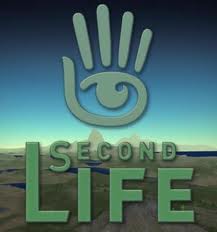Newsletter Issue 4 - June 2009
In this issue:
Trademark Protection on
Facebook
Design Patents
Real Trademarks in a Virtual World
Developments at the Board of Patent Appeals and Interferences
Facing Trademark Protection on Facebook
by Adam Garson
 By now, anybody in the know who uses Facebook, is scrambling (or
has scrambled) to get their own vanity user name. On Saturday, June
13, 2009, Facebook opened the door for an estimated 200 million
users to select any "username" they wanted virtually without
limitation. The benefit is to have a URL which reads "Facebook.com/UserName,"
instead of ending "id=123456789," thereby making Facebook URL's
more user friendly. According to one
report, Facebook gave out more
than 500,000 user names in 15 minutes.
Facebook provides few
guidelines in choosing a user name other than suggesting that it be
as close as possible to the user's true name and one that he or she
would be happy with for the long term. On the other hand, Facebook
warned that it reserved the right to remove or reclaim a user name
at any time and for any reason.
By now, anybody in the know who uses Facebook, is scrambling (or
has scrambled) to get their own vanity user name. On Saturday, June
13, 2009, Facebook opened the door for an estimated 200 million
users to select any "username" they wanted virtually without
limitation. The benefit is to have a URL which reads "Facebook.com/UserName,"
instead of ending "id=123456789," thereby making Facebook URL's
more user friendly. According to one
report, Facebook gave out more
than 500,000 user names in 15 minutes.
Facebook provides few
guidelines in choosing a user name other than suggesting that it be
as close as possible to the user's true name and one that he or she
would be happy with for the long term. On the other hand, Facebook
warned that it reserved the right to remove or reclaim a user name
at any time and for any reason.
So what does this policy say about members who claim user names not their own but like "MyCocaCola" or "LeviStraus" or some other brand we know and love? Facebook understands that this may pose a problem so for a period of time preceding the opening of the user name floodgates, FaceBook permitted owners of trademarks to submit their marks to Facebook before June 13, 2009. Facebook represented that once an owner's submission is approved, it would reject usernames, which conflicted with registered trademarks. Unfortunately, Facebook has now closed the door on trademark submissions so you're on your own to police your marks. If you find that a Facebook user name incorporates your mark, you may still report it to Facebook by completing a Notice of Intellectual Property Infringement (Non-Copyright Claim). How effective Facebook's policing of user names will be is yet to be determined. If it's ineffective, then you have to resort to traditional remedies such as sending cease and desist letters. We'll keep you posted as we learn more.
Many thanks to Carol Fritz, Esquire for bringing this issue to our attention.
Design Patents
by Robert J. Yarbrough
"Design patents" address how something looks; namely, the ornamental design of the object. Examples of patented designs include the appearance of a chest of drawers and the appearance. of silverware. "Design patents" are different from "utility patents," which protect how something works, such as a better mousetrap.
The U.S. Patent and Trademark Office is speeding the issue of design patents. According to the PTO, the average pendency, that is, the time from the filing of the application until issuance of the design patent, is sixteen months. About 80% of design patent applications result in issued design patents. The time for issuing an approved design patent has dropped substantially over the last three years, from more than 140 days in 2006 to 52 days currently.
Real Trademarks Used in a Virtual World
by Adam Garson
In a lawsuit filed in April 2009, Taser International, Inc., the world's largest maker of stun guns sued Linden Research Inc. ("Linden Lab"), the San Francisco based company, which runs Second Life, the online virtual world. Taser Int'l, Inc. v. Linden Research, Inc., 2:09-cf-00811-ROS (D. Az 2009). Second Life enables players, called Residents, to interact with each other through avatars. Residents can explore, meet other residents, socialize, participate in individual and group activities, and create and trade virtual property and services with one another, or travel throughout the world, which residents refer to as the grid. In its lawsuit, Taser claimed that Linden Lab and other defendants damaged the company's reputation and hurt its sales by allowing virtual weapons to be sold online under the Taser brand name.
Not only did Taser's complaint alleged that Linden Lab was infringing its trademarks but also that it was damaging its reputation by selling the virtual weaponry in the same online stores that included pornographic content.
The Taser case was dismissed in May 2009, presumably because the parties settled their dispute. Nonetheless, the lawsuit should raise concerns about policing trademarks in the digital world. The law imposes on trademark owners the duty to police their trademarks. Should your trademark be infringed and you permit the infringement to continue without action, you may be faced with an argument that you have abandoned your trademark. Traditionally, policing your trademarks meant monitoring online and offline publications and other places where your trademark may be infringed. Now that actual commerce is occurring in virtual communities such as Second Life, the scope of policing has widened. The purported population of Second Life is more than 2 million although opinions differ. Nevertheless, there are a lot of people "playing the game" and various companies from Reuters to IBM have set up storefronts in Second Life. It's unclear what the annual GDP of Second Life is -- estimates range from 64 to 200 million USD -- but whatever it is, it's not small.
With the commercialization of Second Life by real companies, concern about the protection of intellectual property rights has grown. Copyright owners can protect their rights through the procedures of the Digital Millennium Copyright Act (DMCA), which Second Life states it will enforce. The DMCA requires service providers upon notice from copyright owners to take down and ban repeat infringers. It is to Second Life's benefit to conform with the DMCA or otherwise it too may be subject to liability for its users' infringing activities.
Unfortunately, there is no such protections for trademarks. The DMCA does not apply in this area, only the provisions of the Lanham Act, which prohibits trademark infringement. Although Second Life could enforce trademark rights by application of its Terms of Service, it specifically states that users are responsible for complying with intellectual property law but has no provision, like that of Facebook (above article), for reporting violations. Apparently, however, there are violations aplenty. One commentator observed:
Ultimately, Linden Labs, the creator of Second Life, relies on the vigilance of SL community residents to monitor trademark and copyright abuses. Yet one boutique still sells a virtual reproduction of the entire Ikea catalog. Virtual computers with the Apple logo have been sold, without Apple's permission. Residents walk the streets of Second Life wearing knockoff clothes and are solicited by black-market vendors selling entire lines of counterfeit goods. Linden Labs may not actively be seeking out offending material, but many of the infringing acts are so rampant and blatant that ignoring these abuses practically amounts to willful ignorance.
Chilling Effects.Org Sounds like the wild west so be vigilant.
Developments at the Board of Patent Appeals and Interferences
by Robert J. Yarbrough
The Board of Patent Appeals and Interferences ("BPAI") is the
body within the Patent and Trademark Office that hears appeals. If a
patent application is rejected twice by an examiner, the applicant
can
appeal to the BPAI and ask that the examiner's decision be
reversed. If the applicant is not happy with the decision of the
BPAI, the applicant can appeal the BPAI's decision to the Federal
Circuit Court of Appeals.
The PTO has raised the profile of the BPAI in recent years and has rejected many patent applications, resulting in a substantial increase in appeals to the BPAI. By statute, BPAI appeals are decided by panels of three judges. The BPAI judges operate under a 'count' system, like patent examiners, under which the BPAI judge is expected participate in about 300 panels per year and to author about 100 decisions per year. Under recent changes in BPAI procedure, the BPAI judge is not given credit for writing concurring or dissenting opinions. The BPAI also has implemented a program where opinions are authored by new patent attorneys and signed by the BPAI judges. For judges who use the patent attorneys, the count requirements are much higher. The steady drumbeat at the BPAI is to do more with less - to hear more appeals in less time and with fewer resources. A decrease in the quality of the decisions will be the inevitable result.

